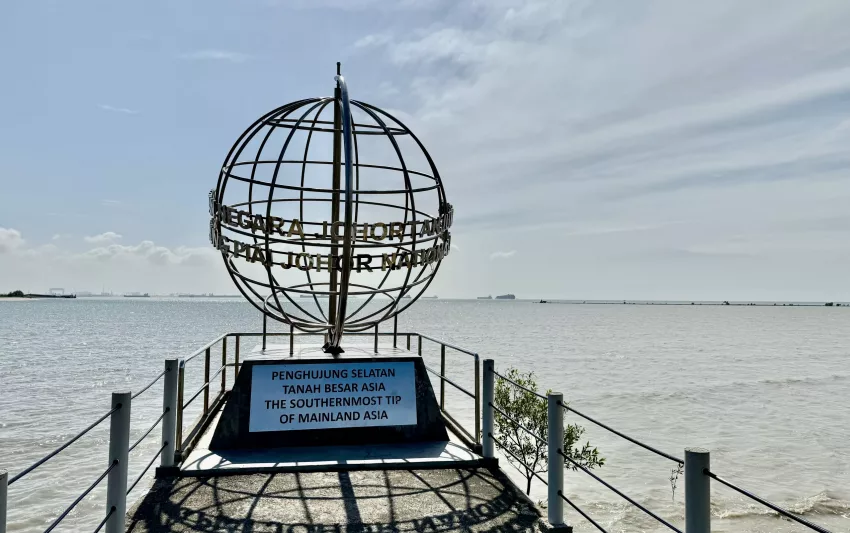
08.02.2025 – Thailand to Singapore day 31
Riding into the Lion City: A Journey from Johor Bahru to Singapore
Today marked the day we arrived at our destination—Singapore, the Lion City. Our journey from Johor Bahru was short but filled with experiences that will stay with us for a long time. The anticipation of crossing into one of the world’s most modern cities was palpable, and the ride itself, although brief, was packed with adventure.
A Slow Start to the Day
The day began leisurely with breakfast at our hotel in Johor Bahru. Knowing the ride wasn’t going to be long, we took our time, gearing up and starting the engine at 9:30 am. Our destination for the morning was the Southernmost Tip of Eurasia, a place we had tried to visit before but found closed (it’s closed every Wednesday, for anyone planning a visit).
The ride from Johor Bahru to the Southernmost Tip of Eurasia is only about 60 kilometers, mostly on highways. It’s a straightforward route, but the excitement of reaching the southernmost point of the entire Eurasian landmass added a unique thrill.
The Southernmost Tip of Eurasia
Arriving early proved to be a good choice, as the place wasn’t overcrowded yet, although the number of visitors started to grow quickly. The walk to the landmark itself is about one kilometer through lush mangrove forests. It was a hot and humid journey, especially with all our motorcycle gear, but a refreshing sea breeze helped us stay cool.
The view was worth every drop of sweat. Standing at this geographical extreme, surrounded by the vastness of the sea, gave a sense of accomplishment. However, the peaceful moment didn’t last long as more people arrived. After taking a few photos, we decided to head back.

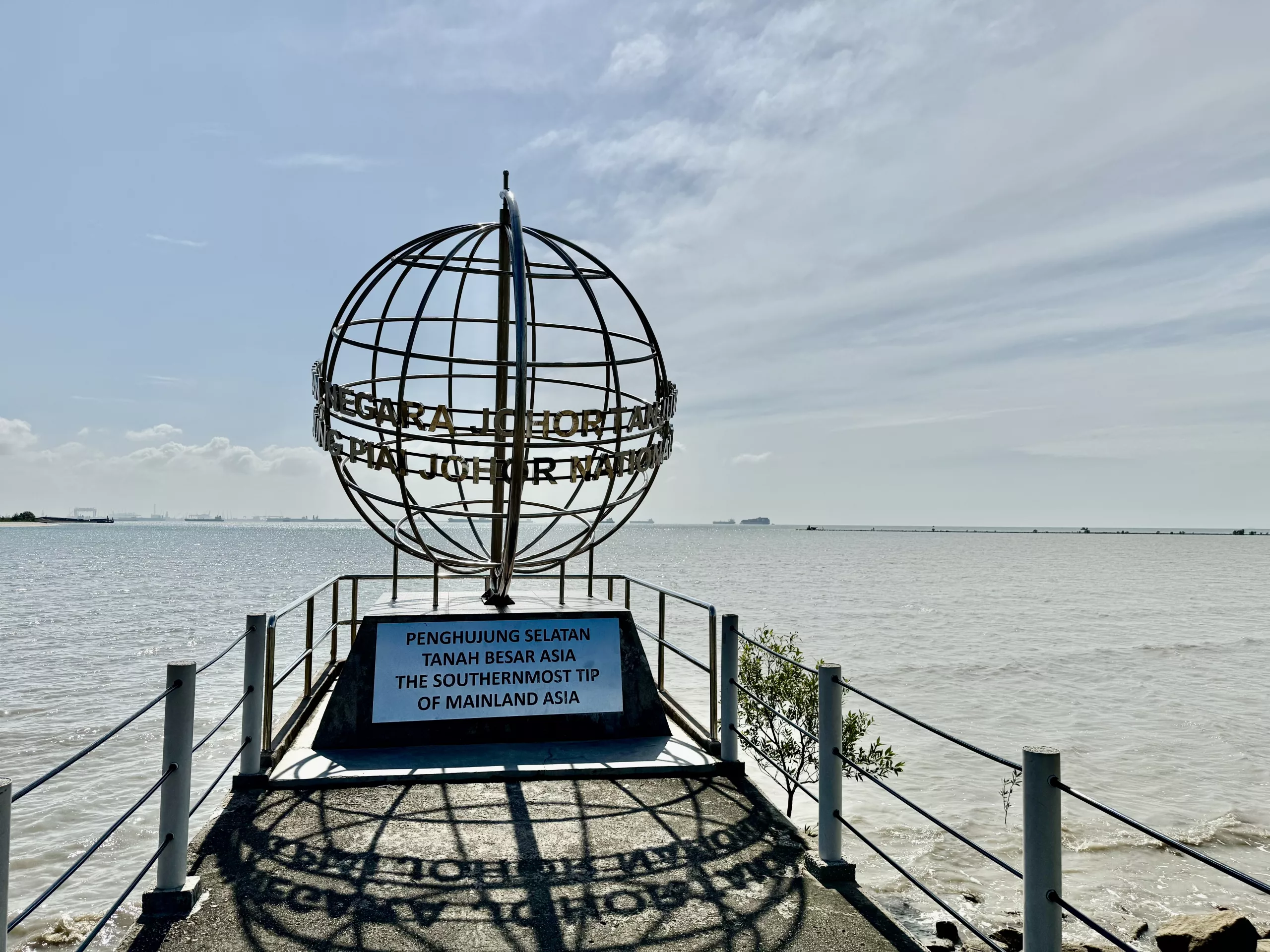
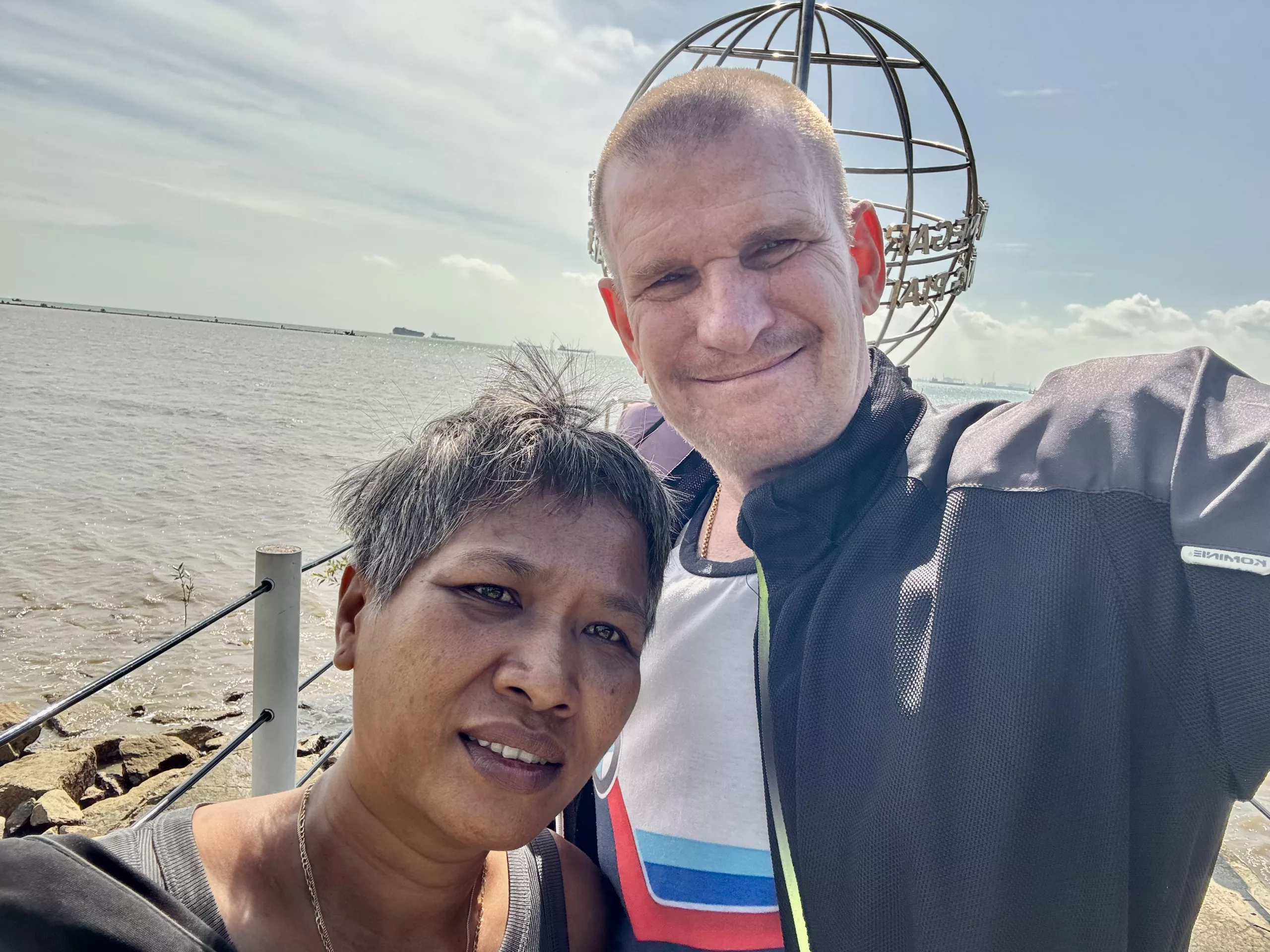
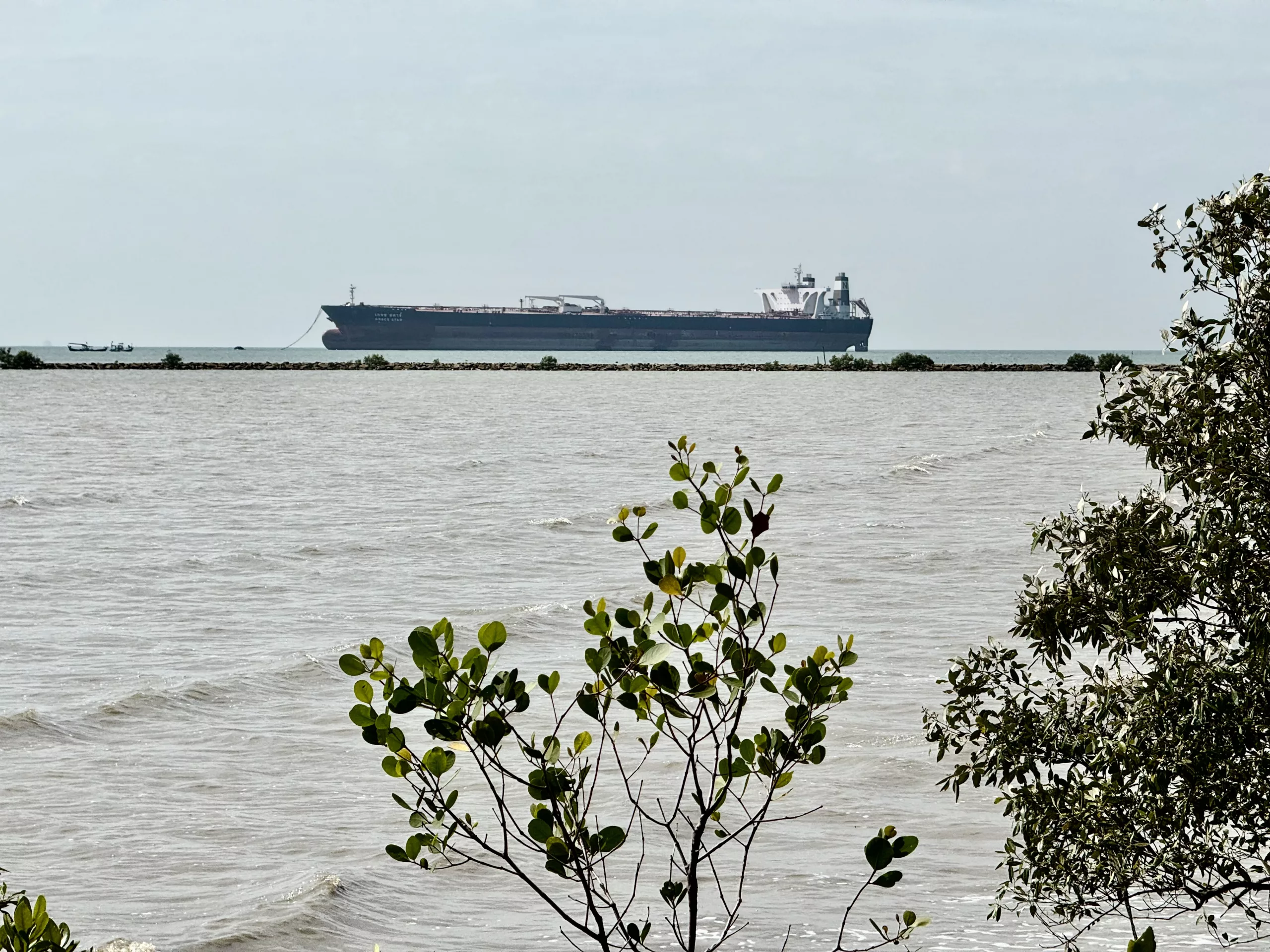
Jeti of Three Kingdoms
On our way back, we made a stop at the “Jeti of Three Kingdoms,” a unique landmark where you can see Indonesia and Singapore while standing in Malaysia. This place reminded me of the Golden Triangle in Thailand, where three countries meet. The atmosphere was peaceful, with fewer people around, and the breeze from the sea made it a perfect spot to take a break.
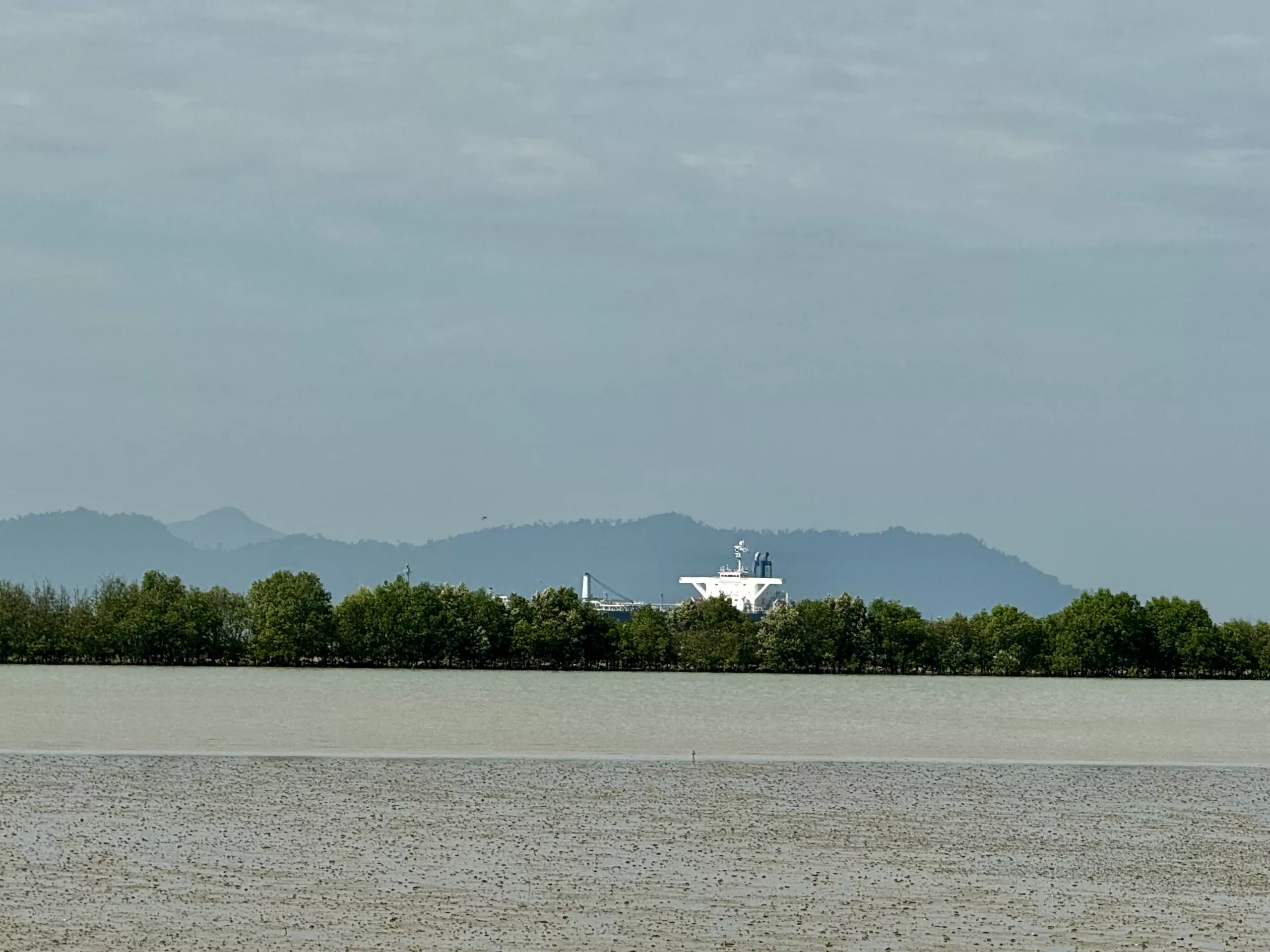
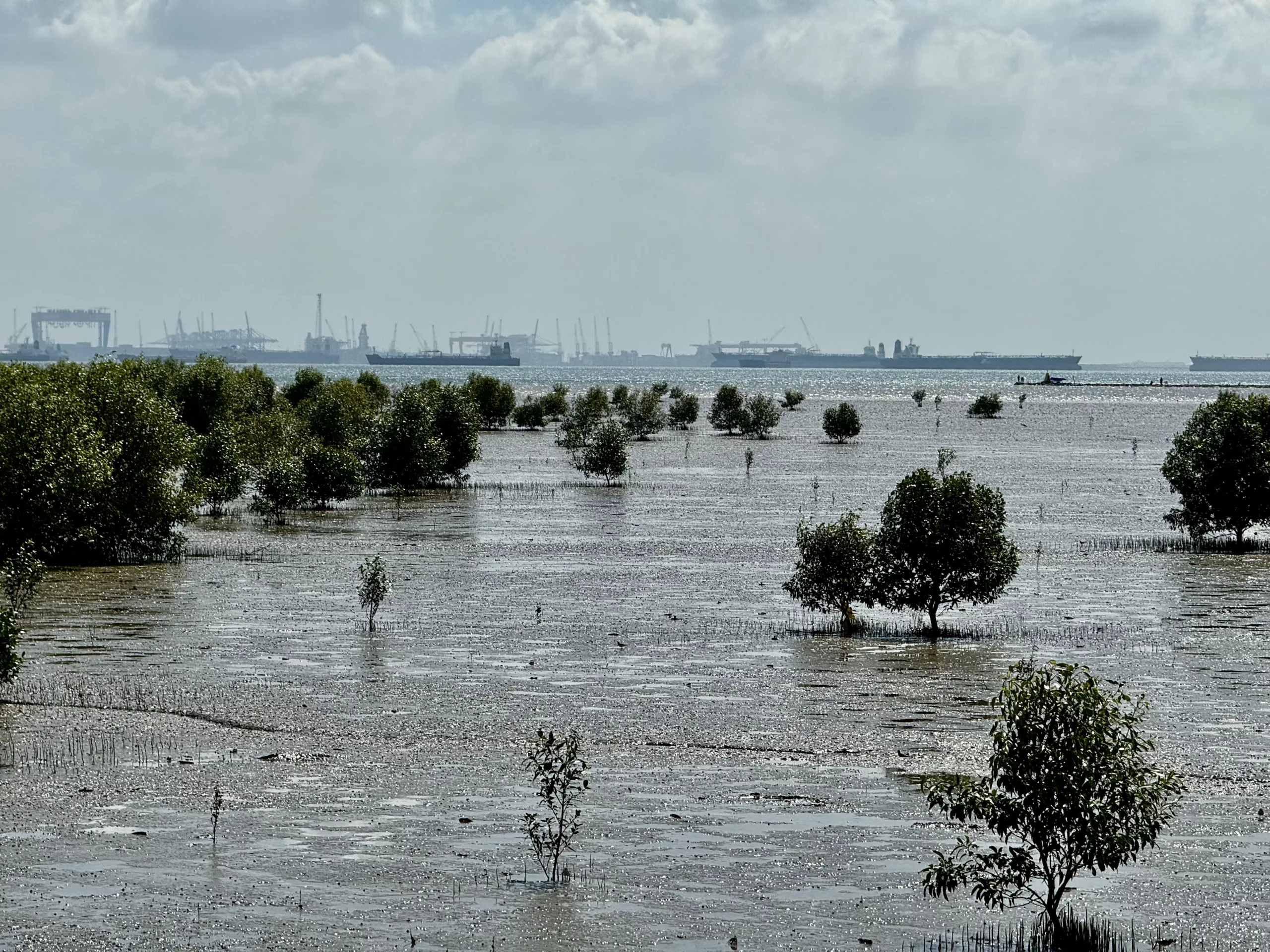
Crossing the Border at Tuas Checkpoint
After refueling and grabbing some water, we were ready to head to Singapore. Exiting Malaysia was quick—just five minutes and one passport stamp later, we crossed the bridge to the Tuas Checkpoint in Singapore.
The immigration process was smooth but required us to fill out an entry form online, which we did on an iPad provided at the immigration office. They asked about our accommodation and the duration of our stay. It’s worth noting that Singapore doesn’t stamp passports; everything is managed electronically.
The only hiccup was navigating the narrow motorcycle lane. With our pannier boxes, I nearly knocked over one of their immigration boxes. A helpful officer advised us to use lane 1 when entering Singapore and the last lane when returning to Malaysia. Valuable advice for anyone traveling with bulky gear!
First Impressions of Singapore
The first few kilometers in Singapore took us through industrial areas—not the most scenic route, but the roads were immaculate. Despite Singapore’s reputation for orderliness, the driving style reminded me of Thailand—chaotic yet somehow functional. With millions of surveillance cameras around, it’s no wonder Singapore is known as the “Fine City,” where even minor infractions can result in hefty fines.
Checking In at Marina Bay
We arrived at the Mandarin Oriental Hotel in Marina Bay, our home for the next few days. It’s not a budget option by any means, but thanks to a lovely lady at the check-in counter, we got a room with a stunning view. After a short rest, we couldn’t wait to start exploring the city.
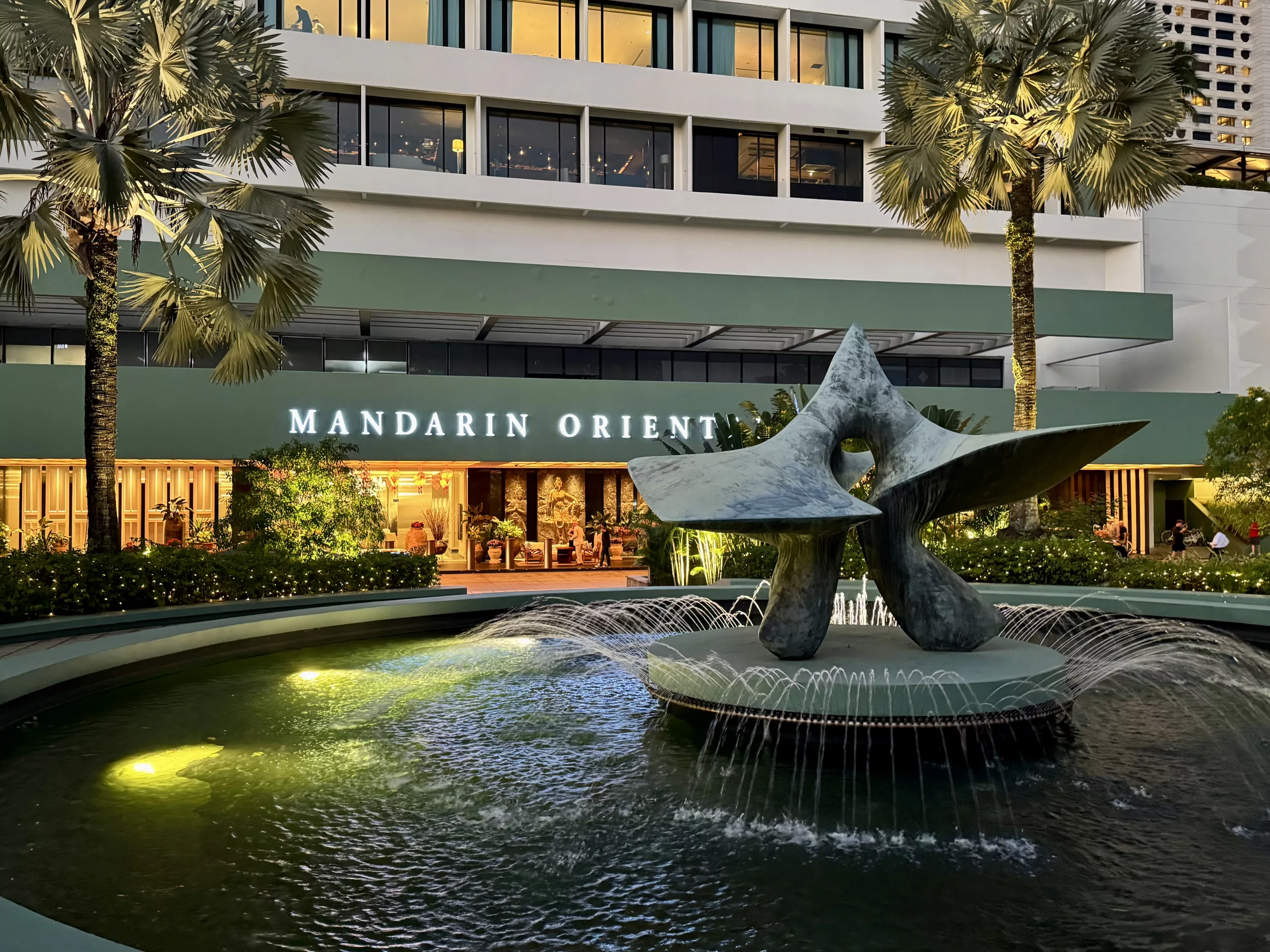
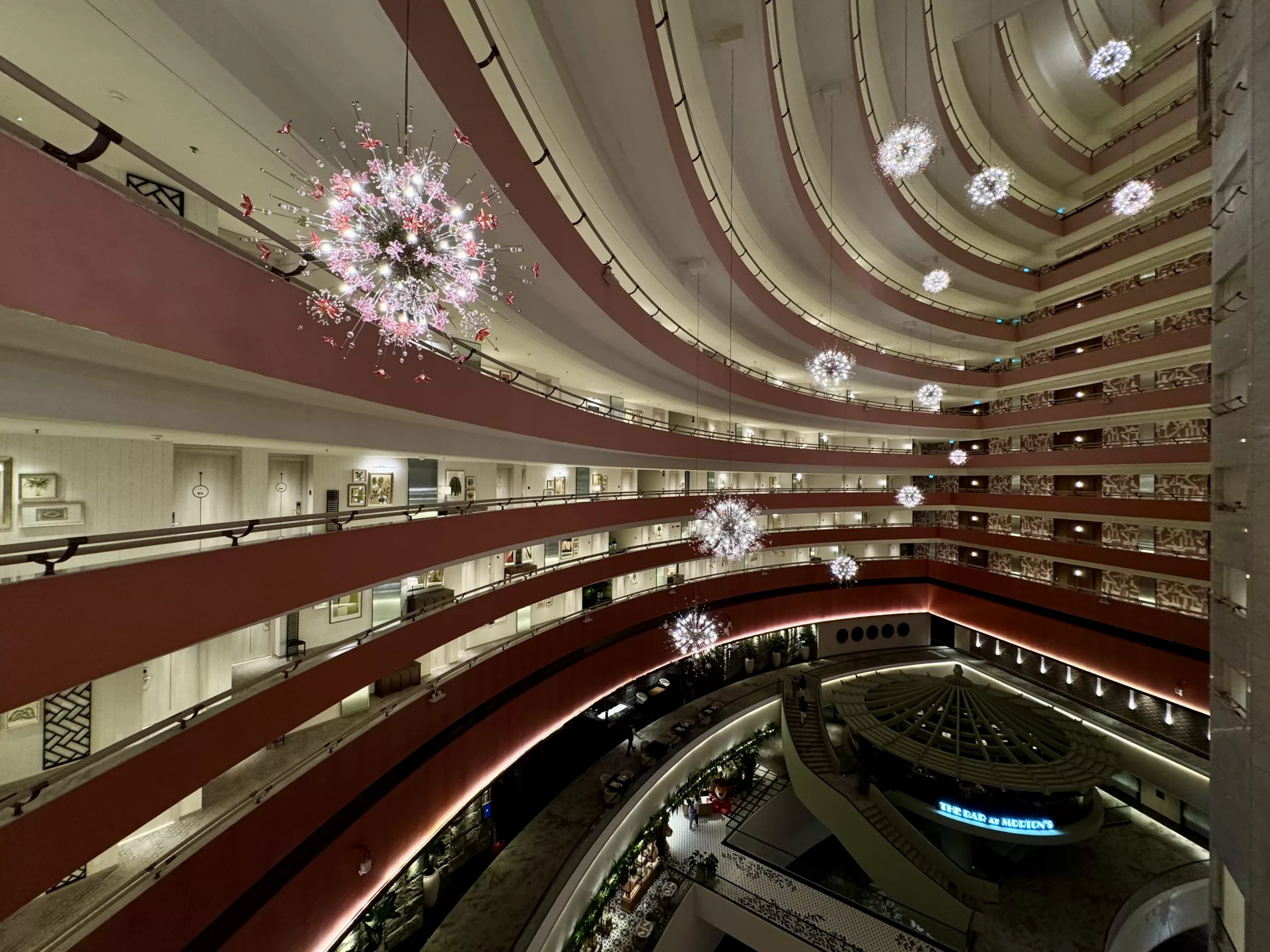
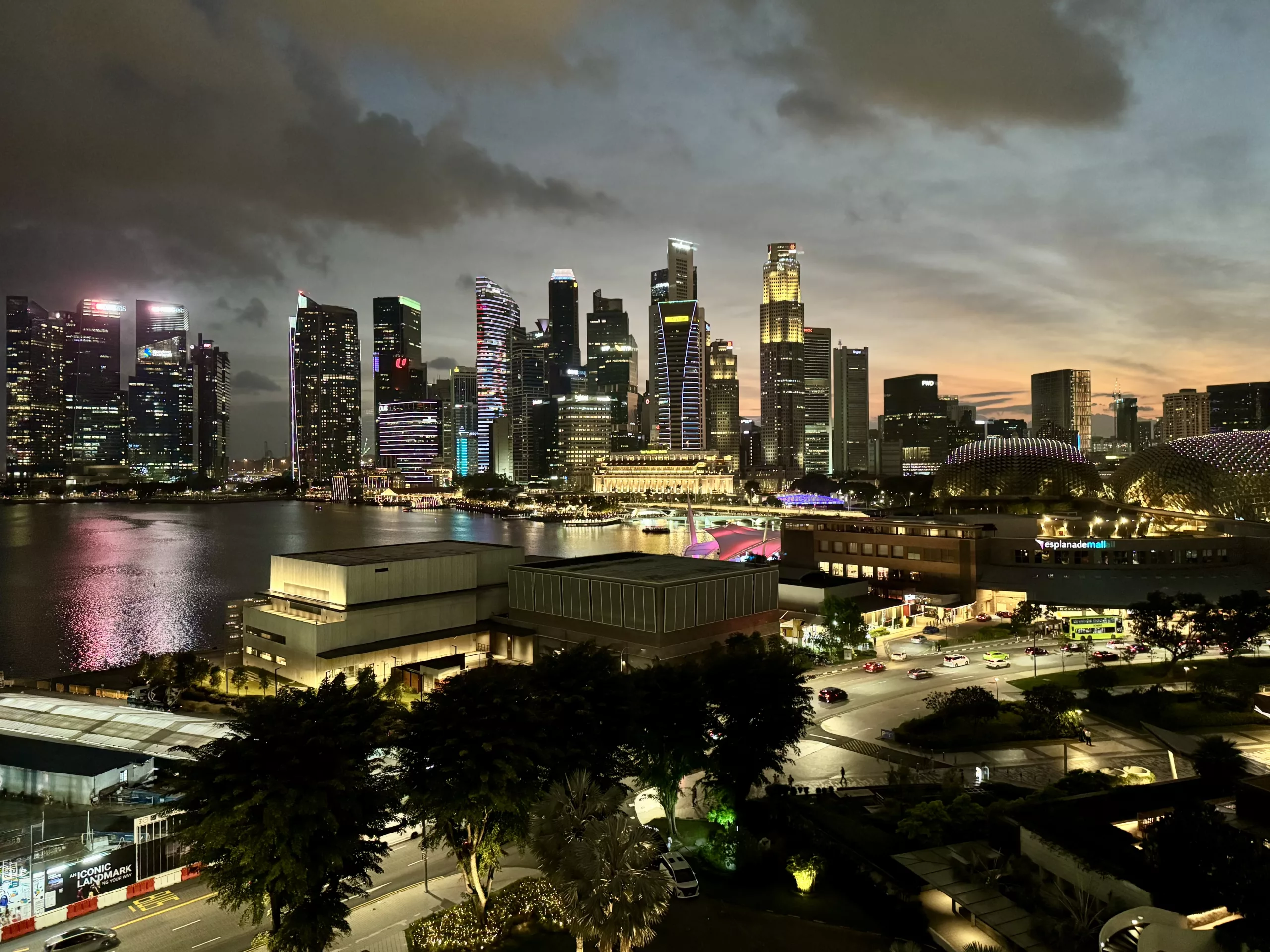
Exploring Marina Bay and the Downtown Core
We began our exploration with a walk along Marina Bay towards the downtown core. The first panoramic views of the Marina Bay Sands Hotel were breathtaking. This architectural marvel has become synonymous with Singapore’s skyline, and seeing it in person was a surreal experience.
The Iconic Marina Bay Sands
The Marina Bay Sands isn’t just a hotel; it’s a symbol of modern Singapore. Opened in 2010, this architectural masterpiece was designed by Israeli architect Moshe Safdie. It consists of three 55-story towers connected by the world’s longest cantilevered platform, the SkyPark, which offers unparalleled views of the city.
The idea behind Marina Bay Sands was to create an integrated resort that combines luxury accommodation, a casino, a shopping mall, a convention center, theaters, and an infinity pool. The design was inspired by a deck of cards, symbolizing prosperity and good fortune, which aligns with the city’s cultural beliefs.
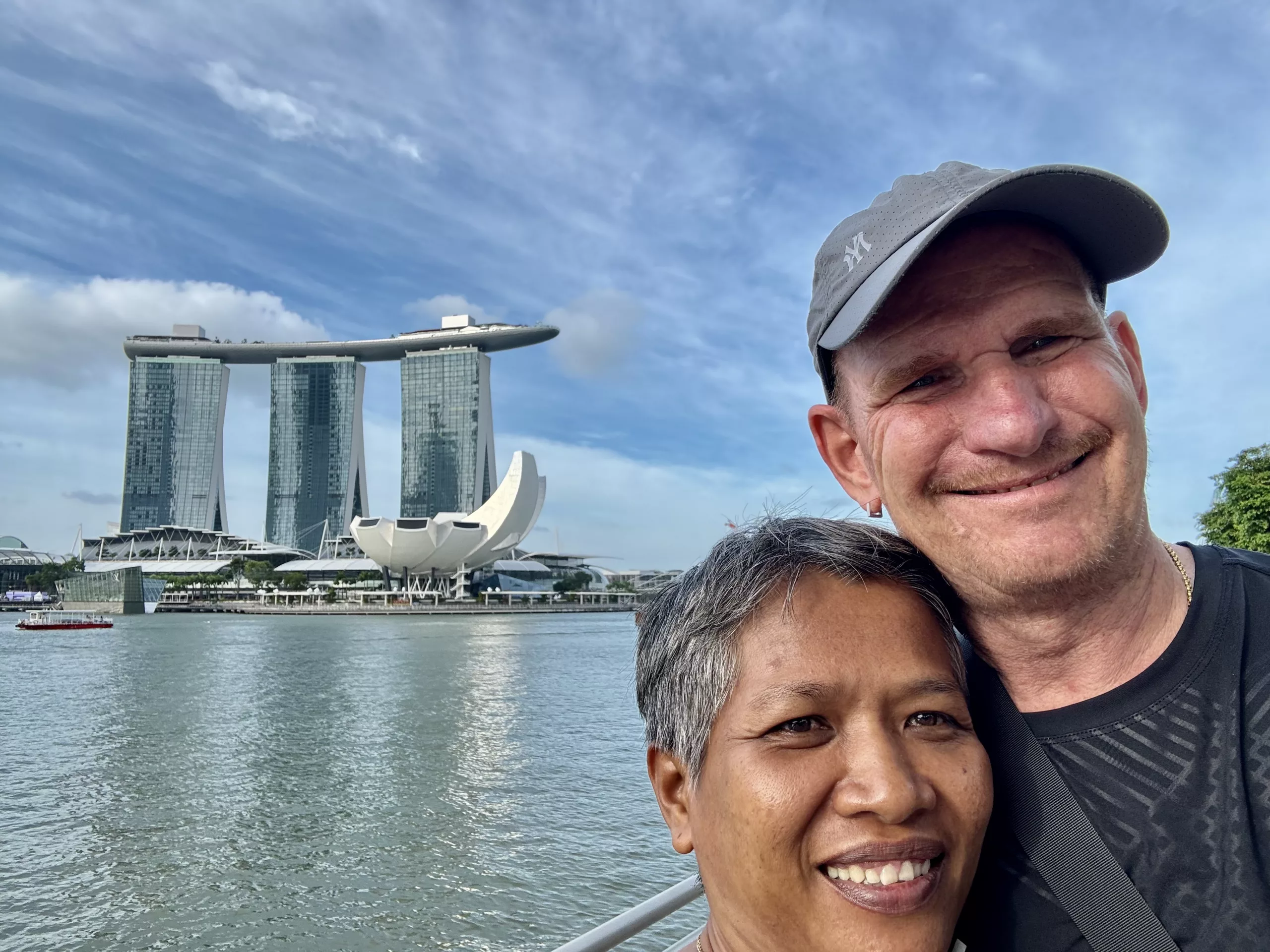
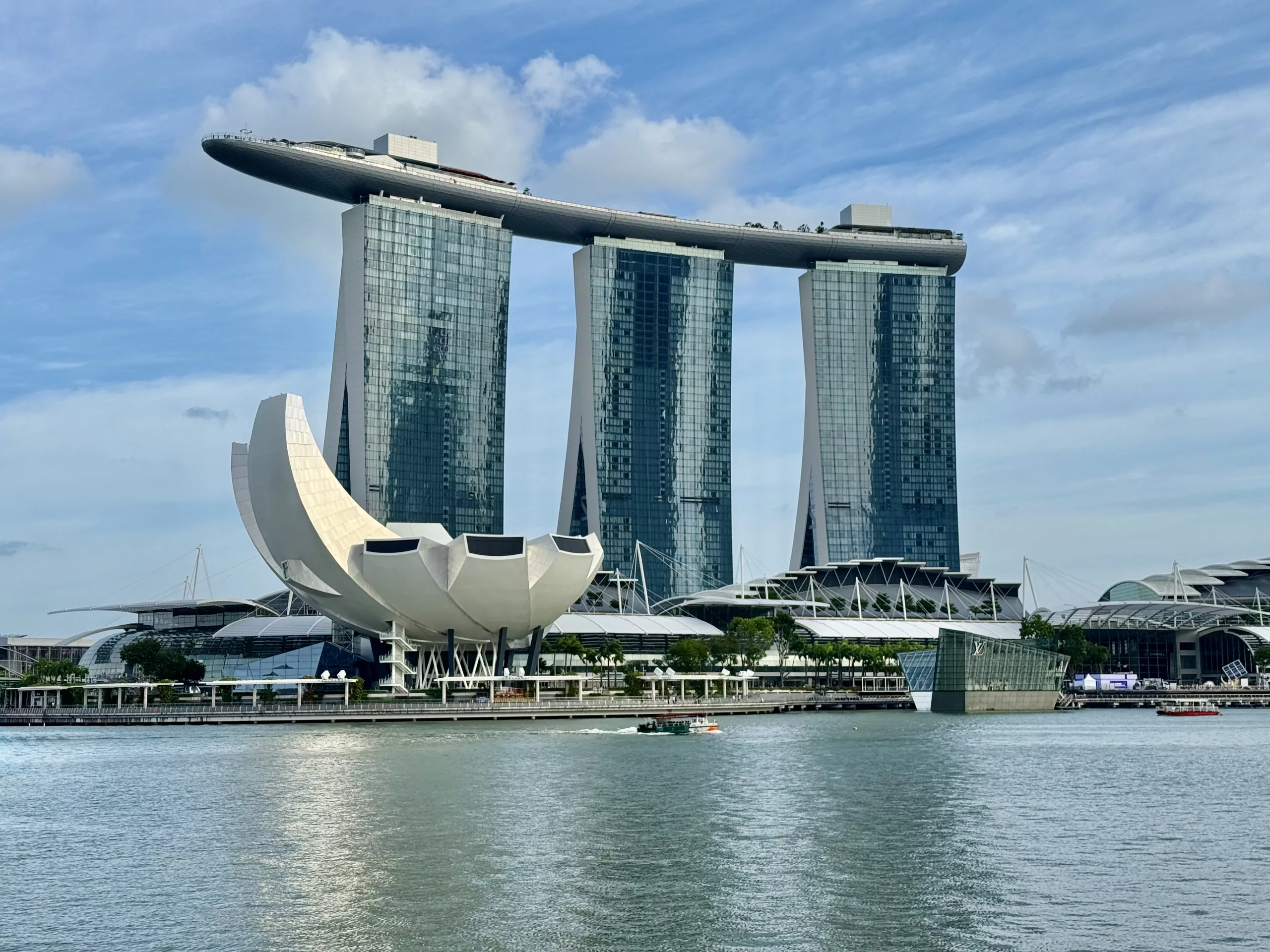
The Legendary Fullerton Hotel
Continuing our walk, we passed the legendary Fullerton Hotel. Once the General Post Office, this historic building is a testament to Singapore’s colonial past. Opened in 1928, it played a significant role during World War II as a hospital and later as the headquarters of the Japanese military administration.
In 2001, the building was transformed into a luxury hotel while preserving its neoclassical architecture. Its strategic location at the mouth of the Singapore River made it a hub of commercial activity during the British colonial era, and it remains a significant landmark today.
Along the Singapore River
We strolled along the Singapore River, with bustling restaurants on one side and the Asian Civilisations Museum on the other. The museum itself is housed in the former Empress Place Building, a colonial-era structure built in 1867. Originally a government office, it now showcases the diverse cultural heritage of Asia, reflecting Singapore’s history as a melting pot of cultures.
The clean, fresh air and the gentle sea breeze made the walk pleasant and relaxing. It was fascinating to witness the blend of historical landmarks and modern skyscrapers coexisting in harmony.
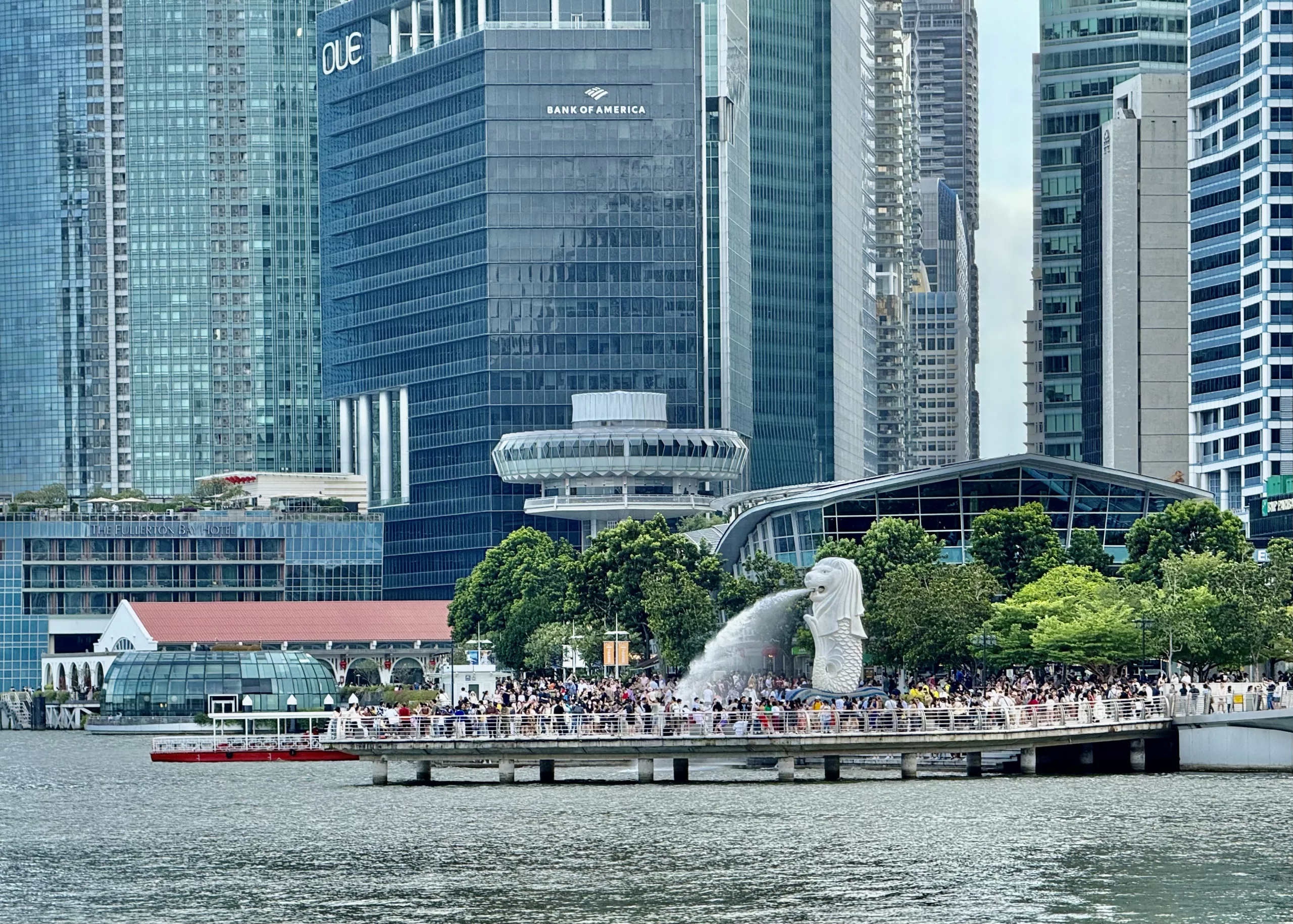
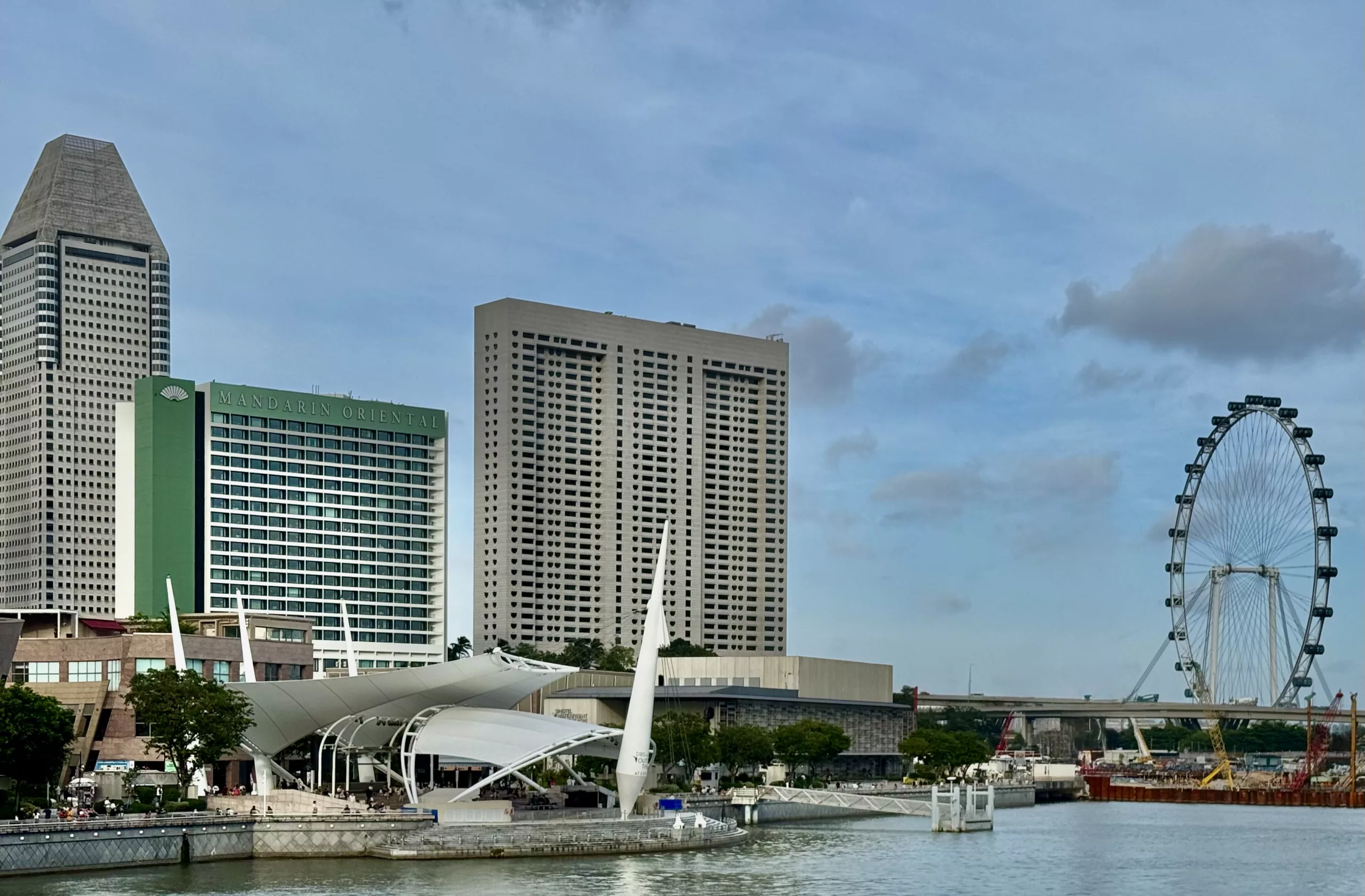
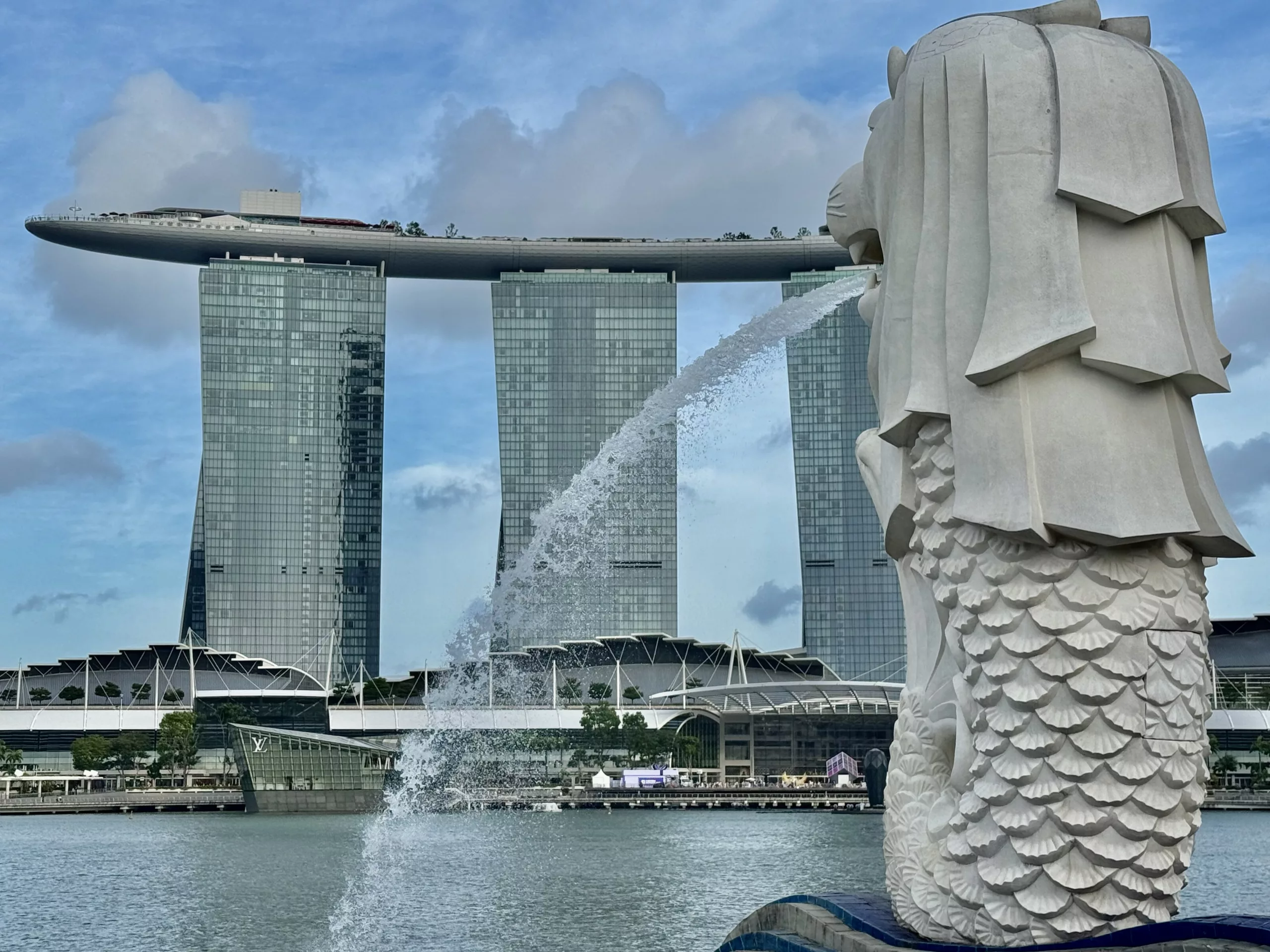
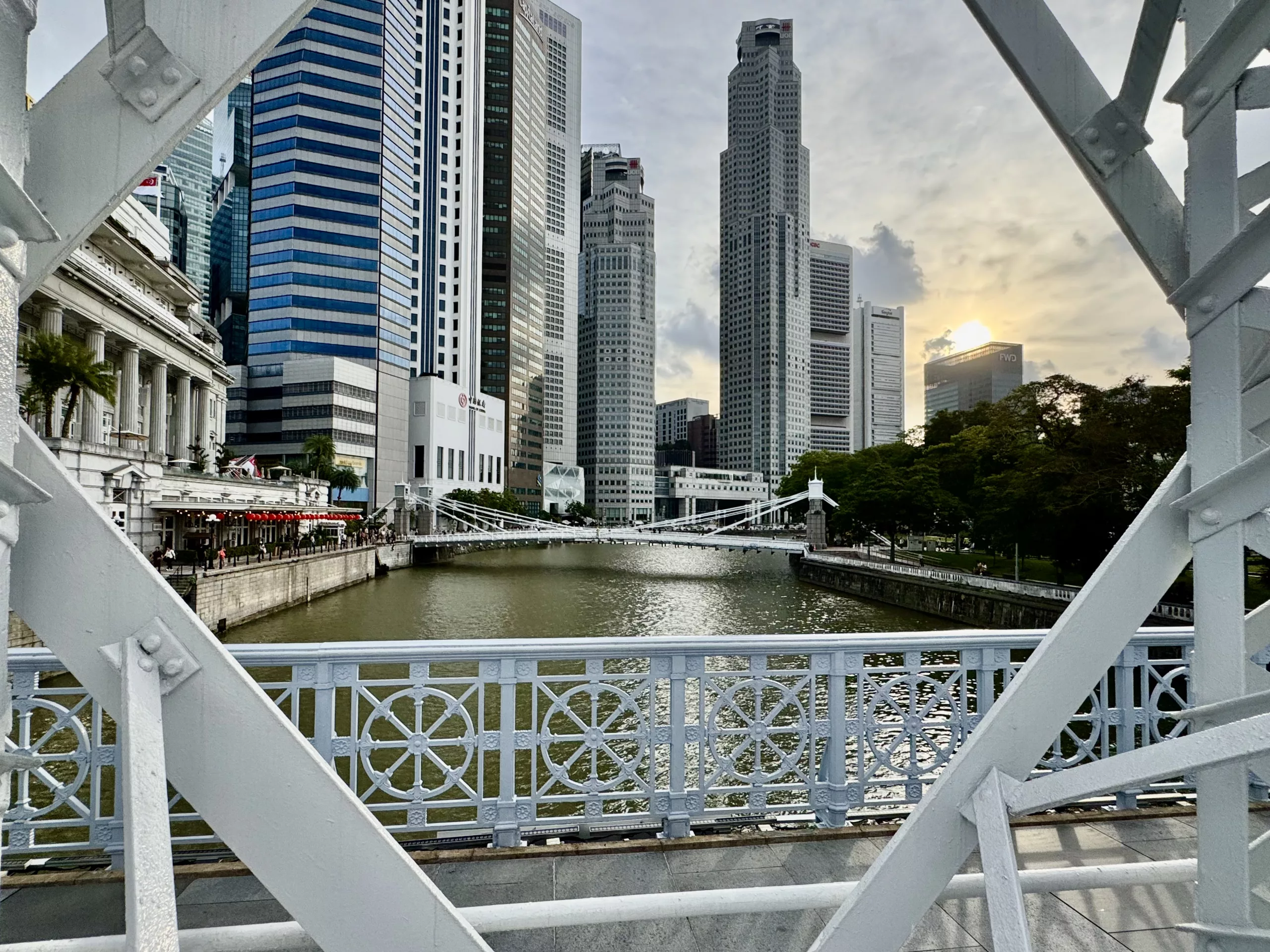
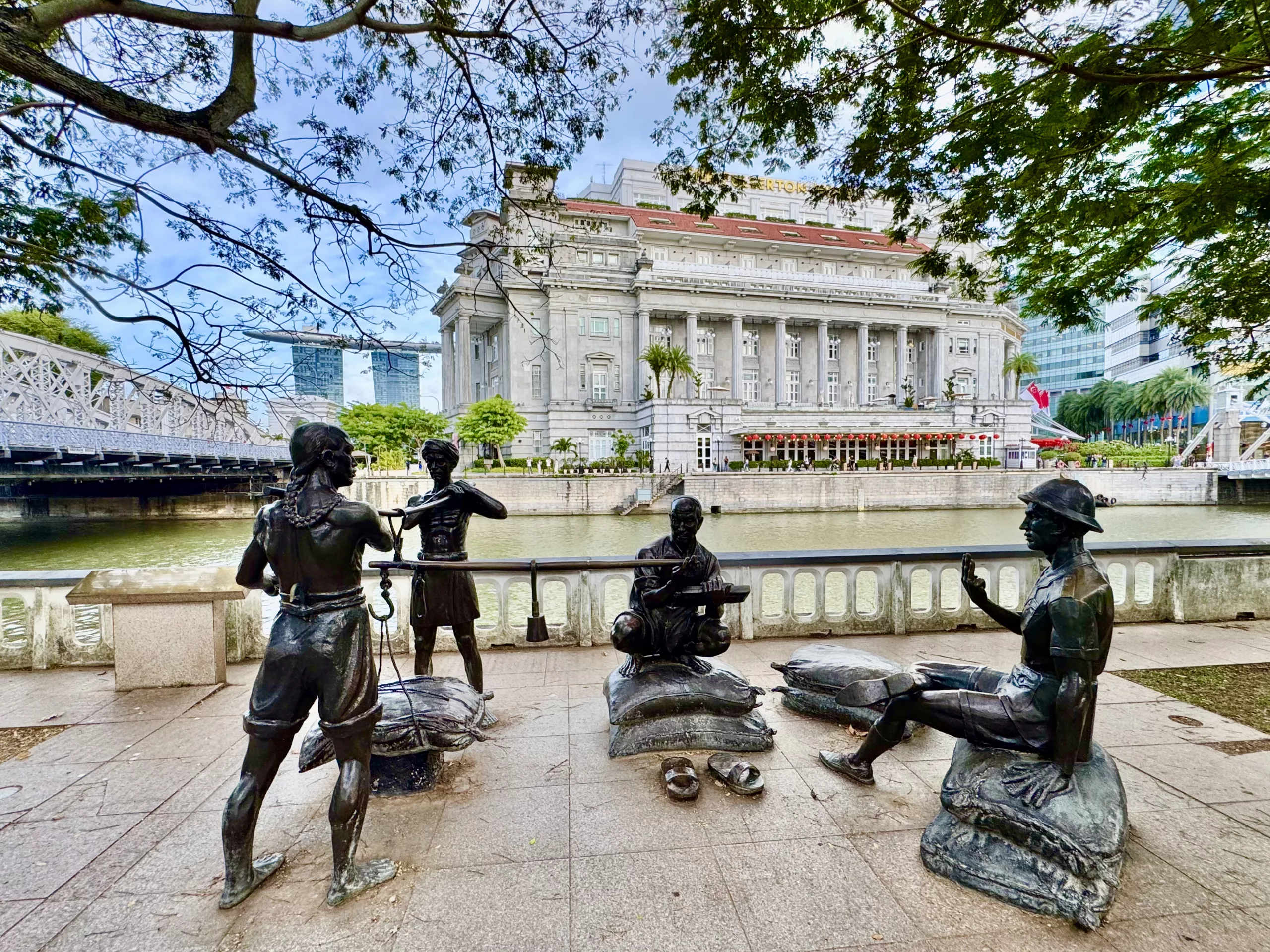
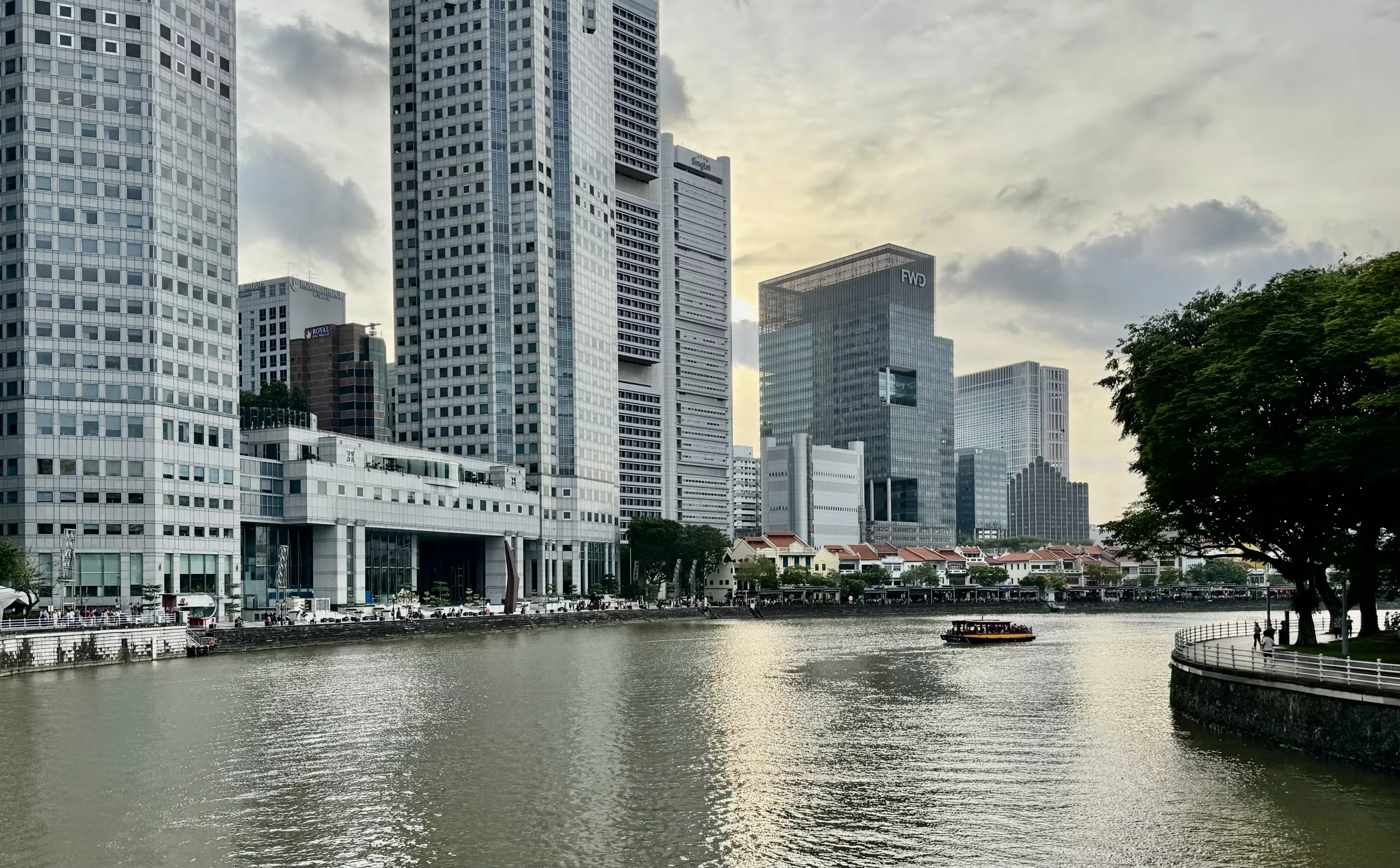
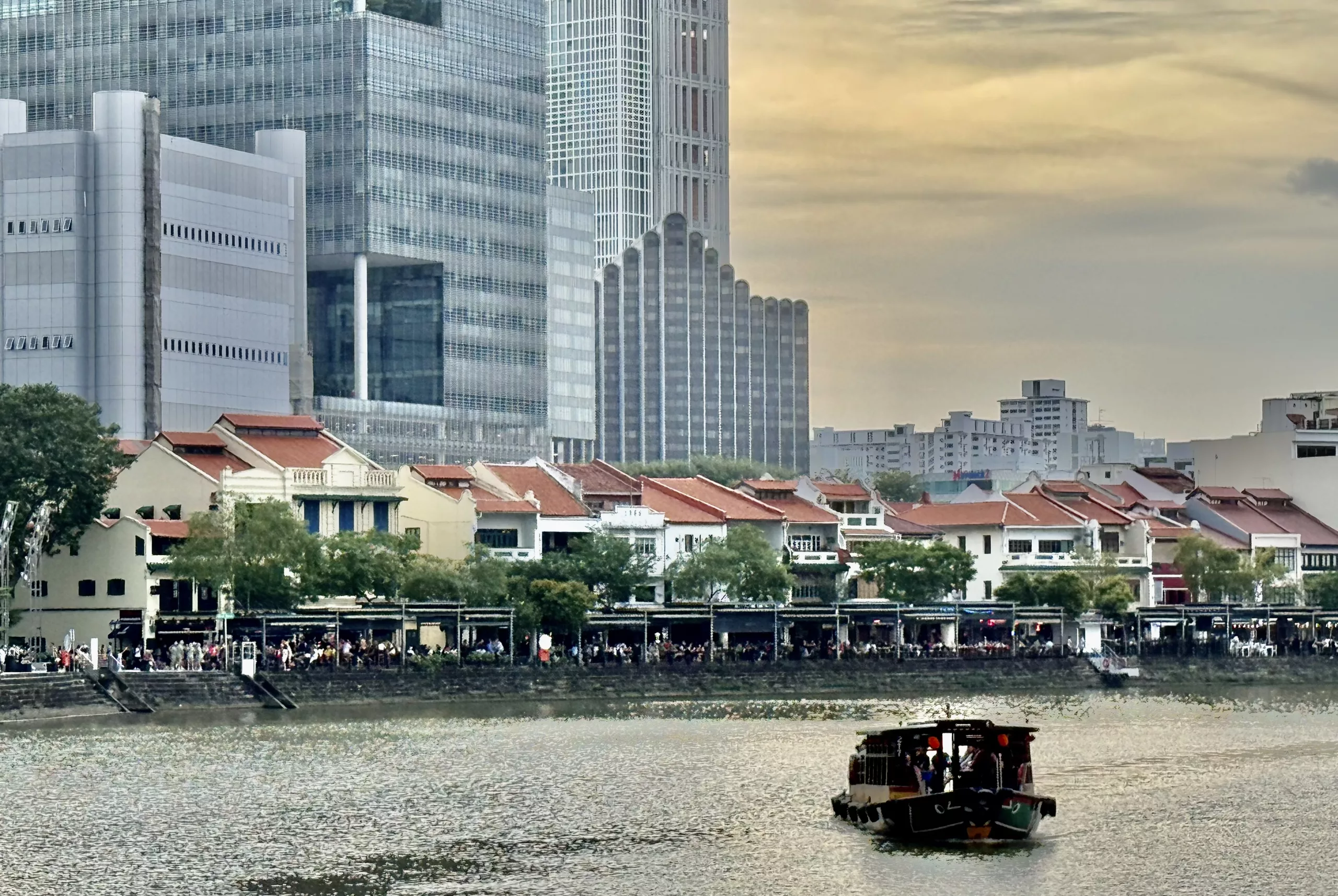
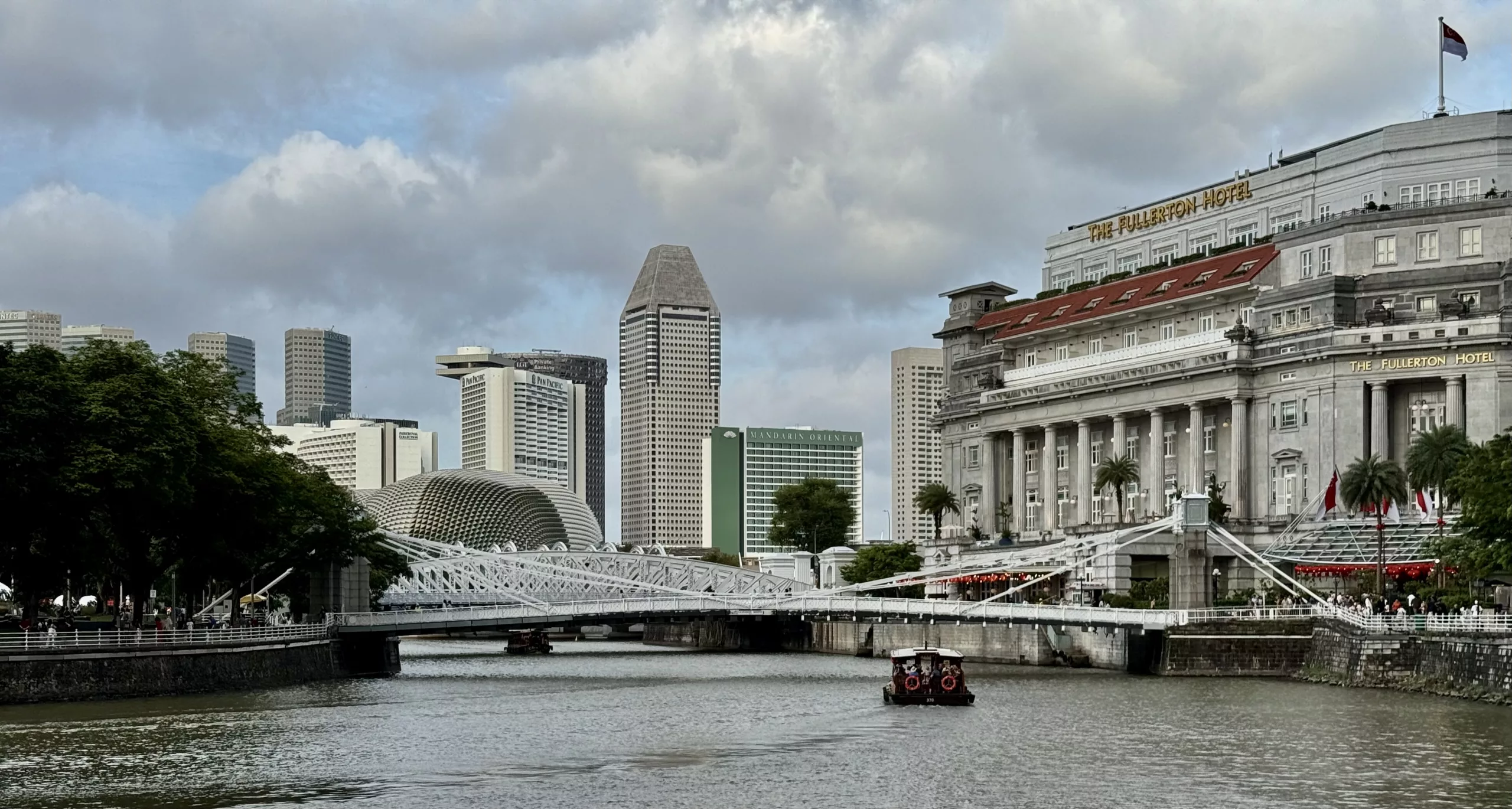
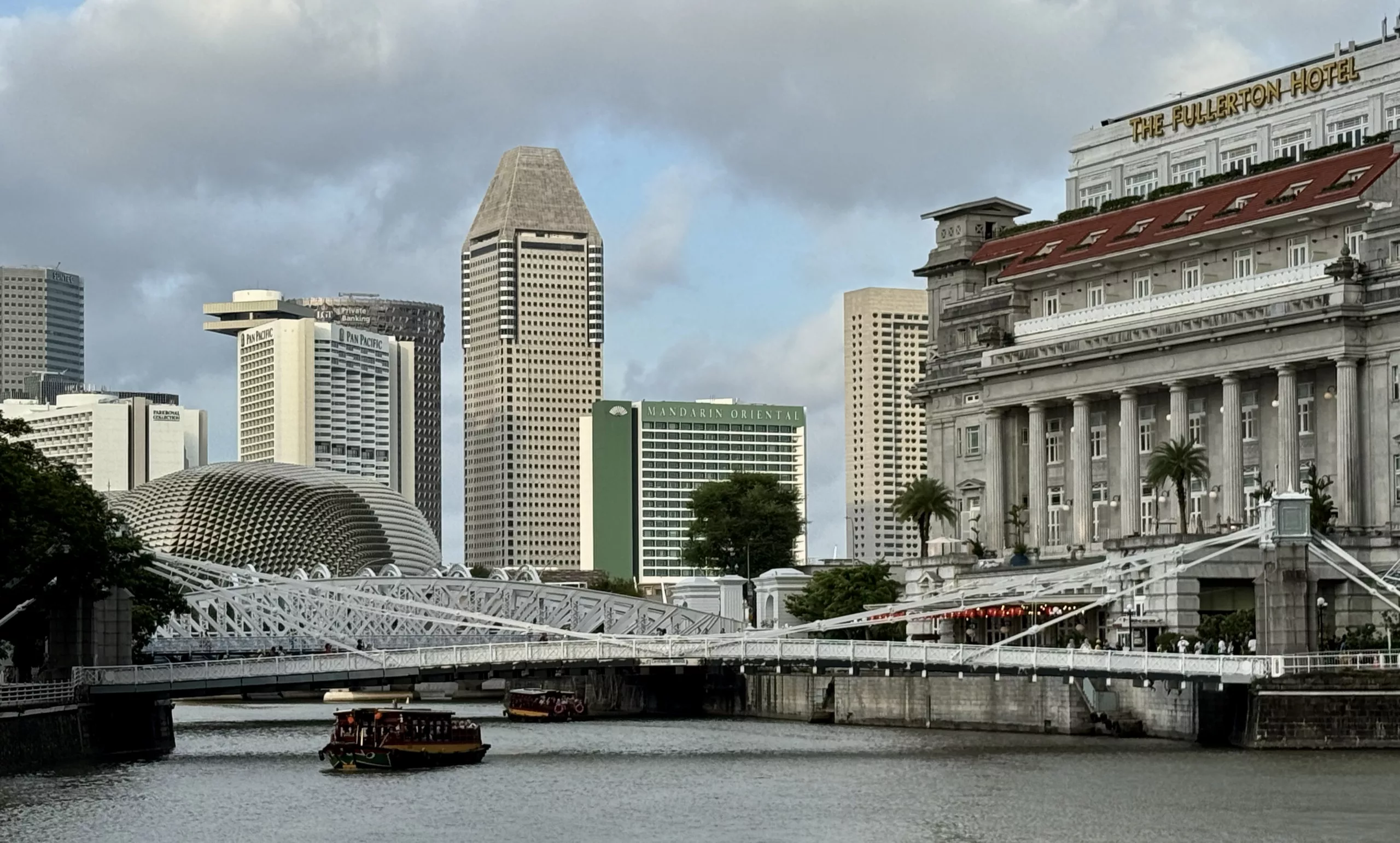
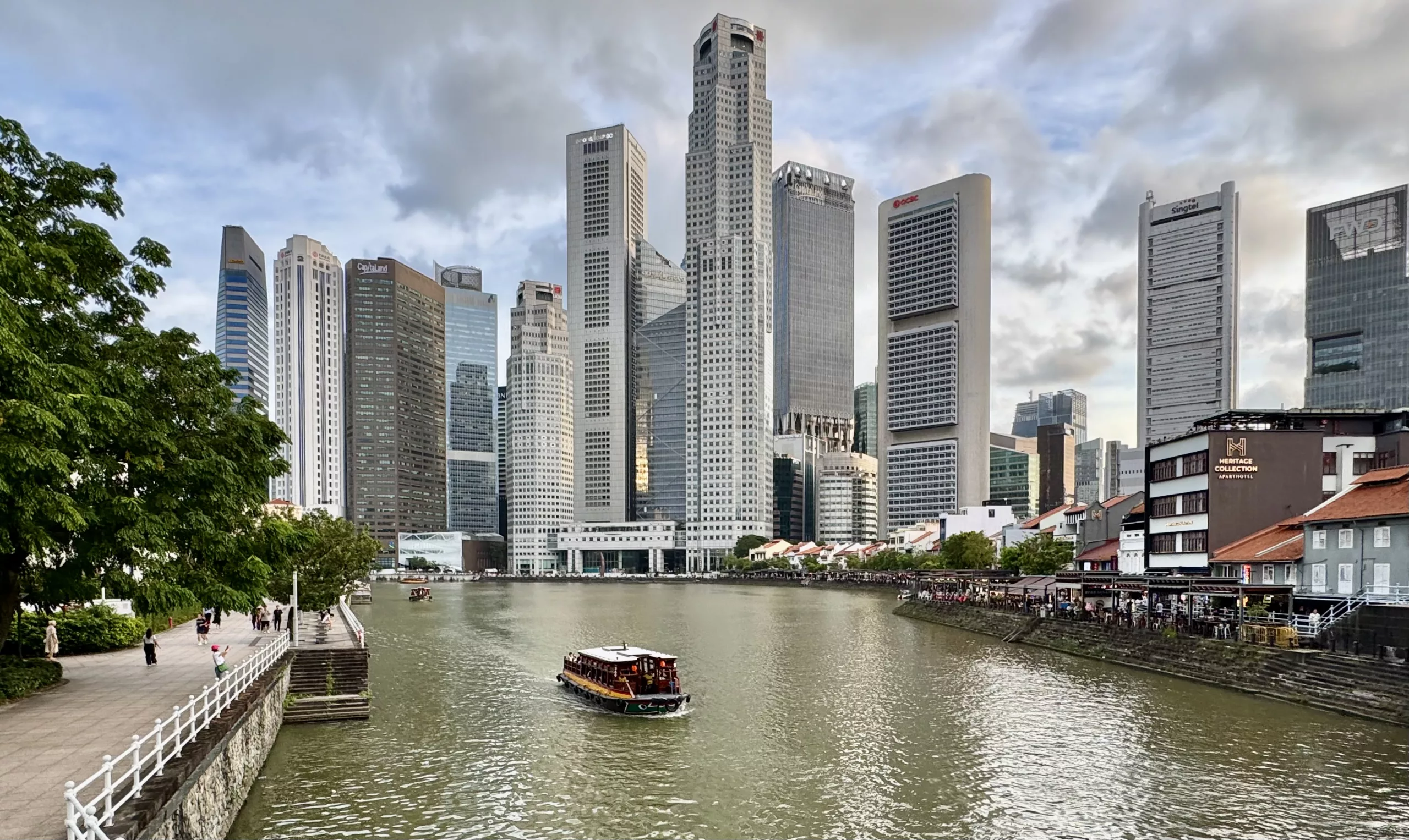
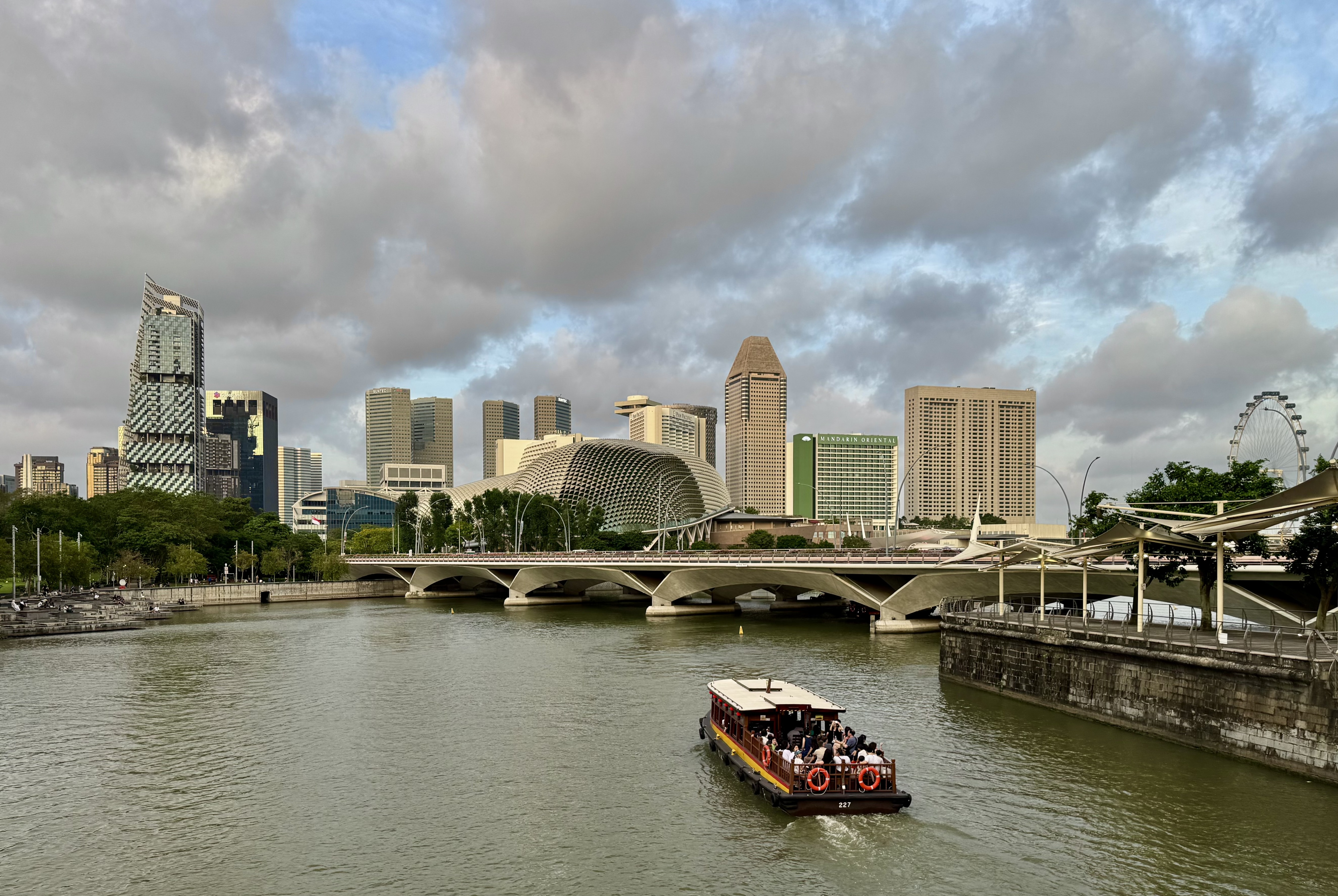
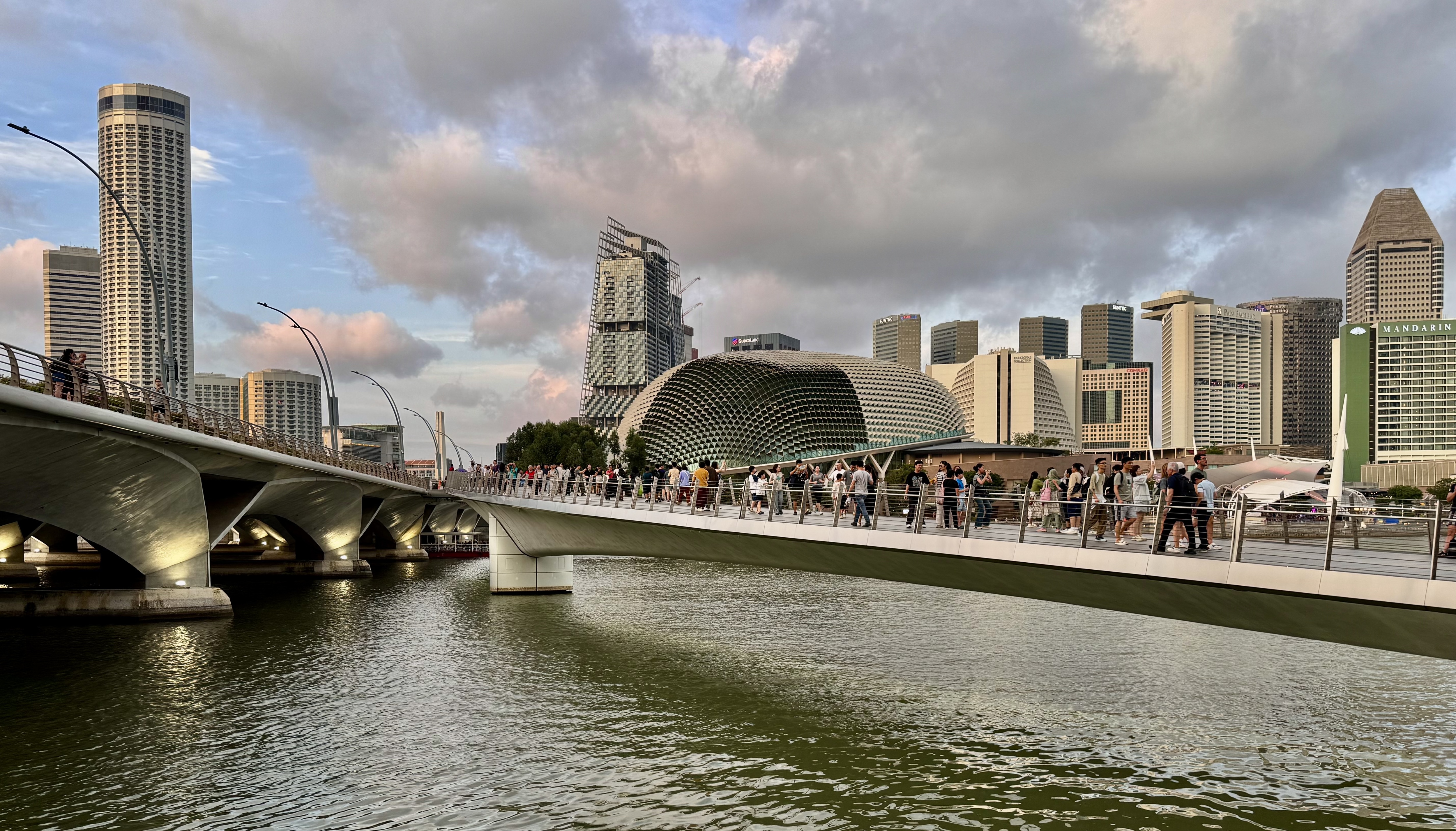
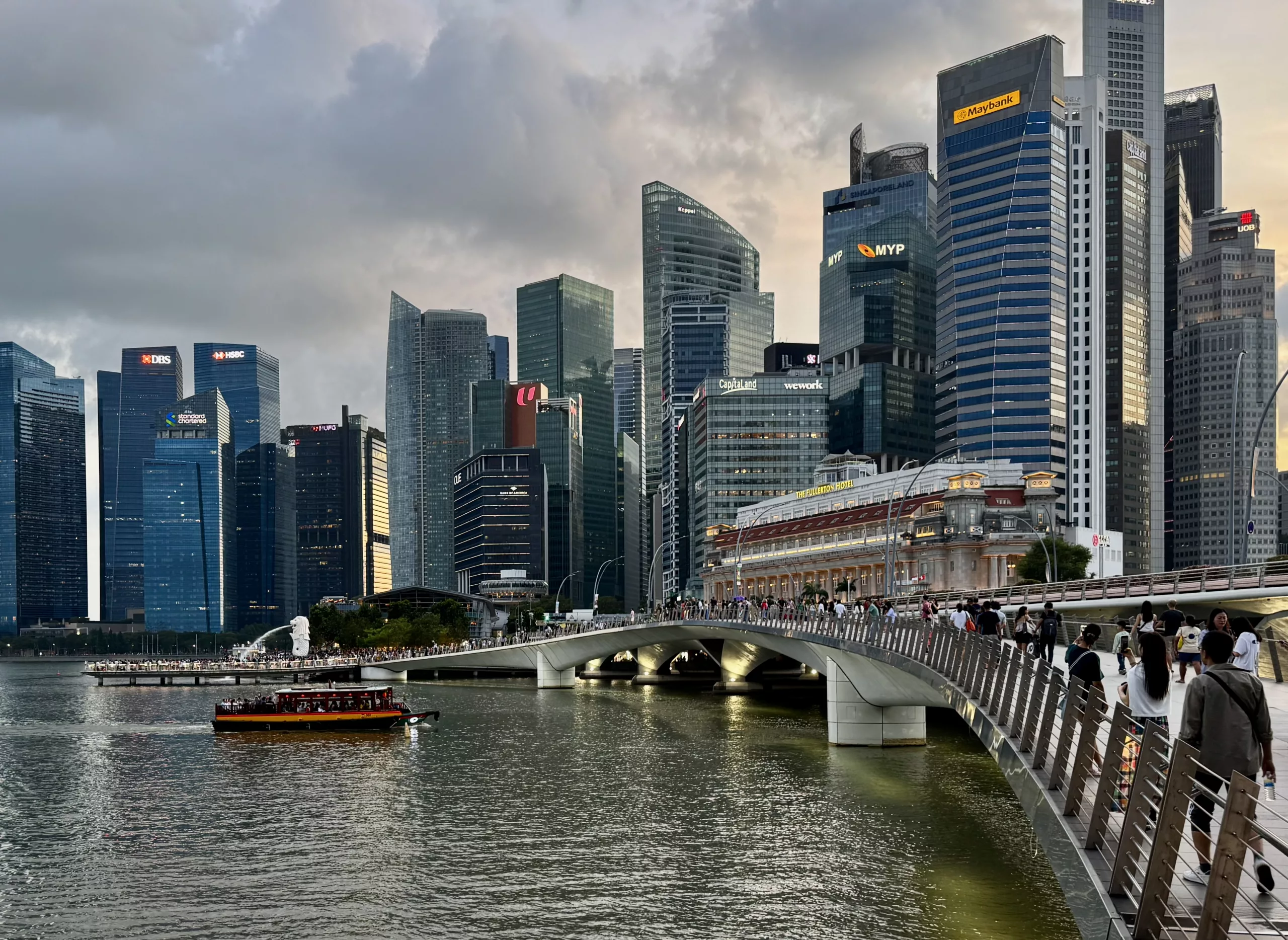
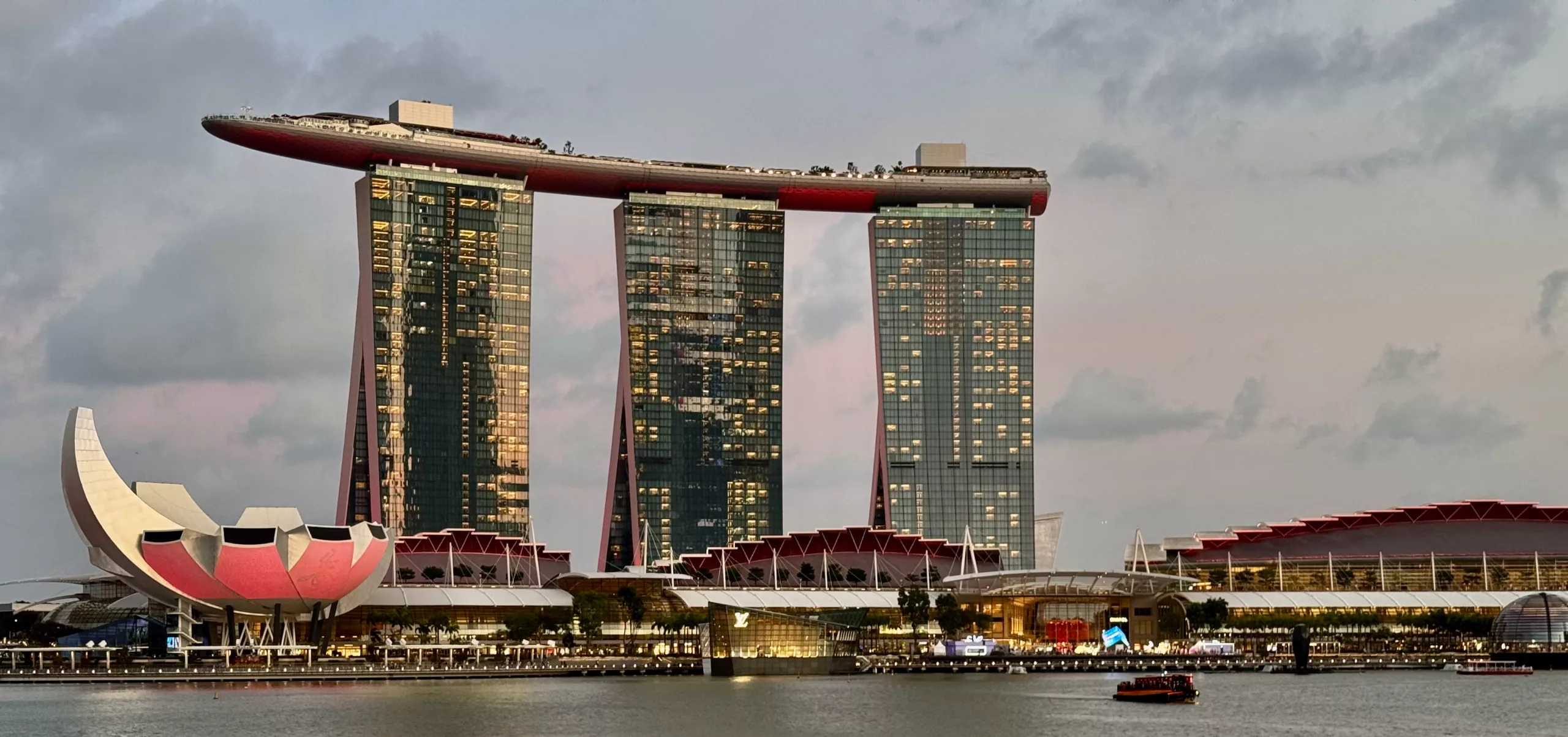
A City of Contrasts and Harmony
Singapore is a city of contrasts. On one hand, it’s a hub of futuristic architecture and technology. On the other, it’s deeply rooted in tradition and history. The seamless integration of different cultural influences—Chinese, Malay, Indian, and Western—is visible in its neighborhoods, cuisine, and lifestyle.
A Glimpse into Singapore’s History
The history of Singapore dates back to the 14th century when it was known as Temasek, a thriving trading post. In 1819, Sir Stamford Raffles established it as a British trading colony, which transformed it into a strategic commercial hub. During World War II, Singapore fell to the Japanese, marking one of the darkest periods in its history.
After the war, Singapore returned to British rule but eventually gained self-governance in 1959. It joined Malaysia in 1963 but became an independent nation in 1965. Under the leadership of its founding father, Lee Kuan Yew, Singapore transformed from a small port city into a global financial powerhouse.
Final Thoughts
Our first day in Singapore was a blend of modern luxury, historical landmarks, and cultural experiences. From the Southernmost Tip of Eurasia to the vibrant streets of Marina Bay, every moment was a discovery. The city’s rich history and rapid modernization make it a fascinating destination for travelers.
Singapore isn’t just a place; it’s an experience—a city that has mastered the art of balancing tradition and modernity. As we prepare for the days ahead, we’re excited to uncover more of what this remarkable city has to offer.
Stay tuned as we continue our journey through the Lion City, discovering its hidden gems and vibrant neighborhoods. For now, we rest, knowing that the adventure has just begun.
#dustysocks





This country is interesting for me to explore and enjoy but always reminds me of the expensive lifestyle what we need to pay for it that is not fun.